On July 26, the Steam Panic game from Russian indie developer Kirill Zolovkin was released. We talked to the author of the game about how the work on the project was going on and why it lasted 7 years.
Steam Panic is a mobile puzzle about cats in the steampunk style, in which the player must put beakers of different colors on the corresponding points. The difficulty is that often to move them, the player must flip the location.
The project has received many awards from the gaming community during development, and in the first week of release on iOS received a worldwide feature from Apple.
Alexander Semenov, Senior Editor App2Top.ru : The most obvious question that arises to you when you learn a little about the history of development: why did the path to release take 7 years?

Kirill Zolovkin
Kirill Zolovkin, author of Steam Panic: Due to a number of circumstances.
We started Steam Panic when the iPhone 3GS was in use. Chillingo ruled the market. Zeptolab consisted of two programmers who wrote Cut The Rope. Steve Jobs was still alive.
Then we dreamed of making a game that he would show at the Apple conference, but none of us understood how to make mobile games.

That was our dream
We studied and lived in Karaganda. We worked where we had to and on what we had to. Websites, advertising agencies. In parallel, Steam Panic was forged.
In two years, a team of three people made the first version of the game. The graphics and all the mechanics were already completely ready for it.
But it so happened that the programmer who wrote the C++ project in Cocos2D-X left us.
Cocos2D-X version of the game
Without the code and without a person who would be ready to write it, I had to get out of it. I only knew GameMaker, I started transferring the game to it on my own.
Then the export for mobile phones to GameMaker still worked poorly. I had to fix a bunch of bugs myself by trial and error.
While I was learning to code, Sergey Tkach, my designer colleague, managed to redraw the graphics eleven times. It was his first game: he had never drawn anything for games before.
Art History for Steam Panic
While Steam Panic was being developed, I managed to work on HOPA, a shooter in the spirit of Twisted Metal, a midcore strategy with meta like in Clash of Clans. I moved to Sochi, then to St. Petersburg. Lost his mother, got married. At the wedding, friends laughed that I had closed one of the two life projects. It took two years to actively develop the rhythm game Paper Knight.
And all this time Steam Panic was hanging in the background.
Then, when the project had already reached the finish line, it took a year to contact publishers. Another year at conferences and exhibitions, communication with Apple. I couldn’t afford to throw the dream game into the void.
That’s how 7 years turned out.
How much do you estimate the time spent on the project, if you count the net time spent on it, excluding the main work and other things?
KIRILL: It’s very difficult because we’ve never worked on a project all the time. By fits and starts, on weekends, on vacations, after long stagnations, communicating remotely (the artist lives in Kazakhstan). I think it took two years to develop cleanly in full force.
The project began to receive its first awards at exhibitions back in 2015, even then it looked quite ready, what prevented it from finding a publisher and publishing?
All awards Steam Panic
Steam Panic had six awards and nominations by the time it was released. Awards brought fame in industrial circles (thanks DevGAMM), nice bonuses, like PS4 and iPad (thanks VKFest), as well as travel abroad (bow Casual Connect). When you live with these awards, it seems that publishers will tear off the game with their hands, and after the release you will be awash in money. But this is not the case.
I’ve shown Steam Panic at a dozen conferences. I did everything to “sell” the product to publishers. We even started working with one, but after a while it fell off. I was scared to death to release a dream game without knowledge of the market. Someone honestly replied that this was not their profile. With some there was a long and tedious communication. I stopped looking after the dump of the most promising. Alex Nichiporchik’s suggestion to fasten a gamepad to the game also influenced. I tried and realized that I was doing the wrong thing in life. Steam Panic was created for the touchscreen. This is how we saw her from the very beginning. Igor Arterchuk (Party Hard) helped morally by hinting at a simple but not obvious truth: you can afford to release a game yourself at least once in your life.
You didn’t look for obvious ways to develop the project and chose GameMaker, whose unofficial evangelist you are today. But at that time it was also a forced decision.
Kirill: When you have been working with an instrument for fifteen years, it is difficult to prefer something else to it.
Specializing in the design of game mechanics, I used to create their prototypes myself. GameMaker has greatly influenced my way of thinking, the way I generate ideas. For example, the mechanics of the rotation of the field in the game appeared as a result of prototyping. But this is the main feature of the game!
There are good reasons not to create 3D games in GameMaker, but it handles 2D perfectly. We wrote Steam Panic on Cocos2D-x, tried it in Unity. Having done everything on GameMaker, I surprised the departed programmer with the speed of drawing objects on the screen.
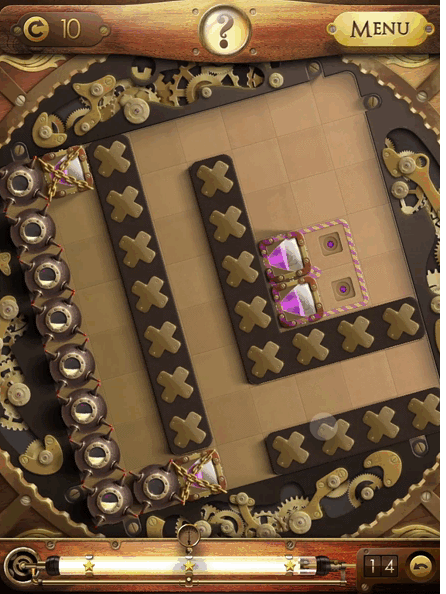
Knowing how many people are still struggling with the 2D Toolkit in Unity, I wonder where such a negative attitude to GameMaker Studio 2 comes from. It is called a “tool for schoolchildren”, “nerdy crap”, “prehistoric editor”, they say that “there is no cross-platform”. All this has long been untrue. GameMaker is ideal for small teams doing fast 2D. The only problem is finding programmers with experience in GameMaker. But I hope it will be resolved over time.
We all know GameMaker as an ideal engine for two-dimensional platformers with pixel art. There is no pixel art in your game and we are talking about a puzzle. Do I understand correctly that I had to write additional tools for the engine, with which it was already possible to make levels?
Kirill: All my projects on GameMaker are designed to dispel myths about it. The Steam Panic puzzle has detailed steampunk and the rotation of the playing field, Paper Knight has a paper style, and this is a rhythm game, and Gripper is a dynamic action packed with effects, which many take to be made in 3D.
I wrote the Steam Panic level editor in two weeks, not being a programmer, to do levels on my phone while riding the subway.
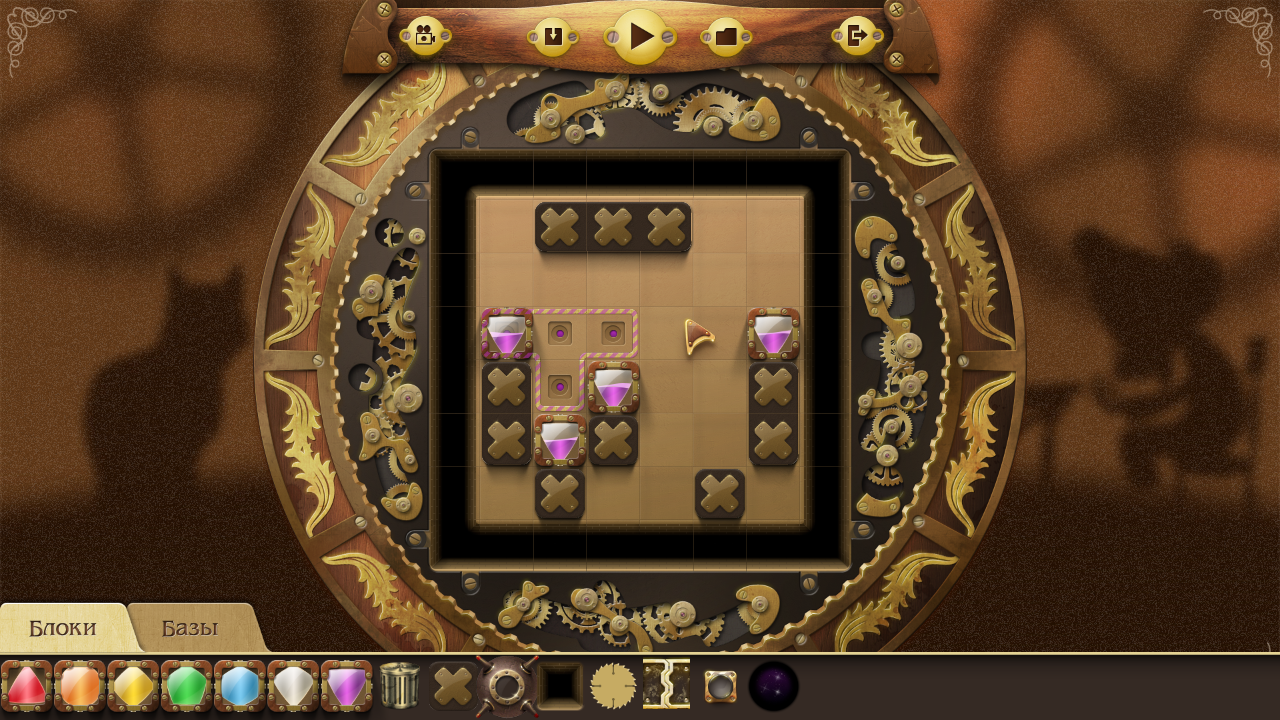
PC version of the Steam Panic Level Editor
Now GameMaker Studio 2 has its own good map editor with layers. There is a beta version for macOS, which in the future will speed up work with an artist who does not get off the Mac.
To create cool effects, we have created our own Geon FX editor, which is now available for everyone under Windows and Mac.
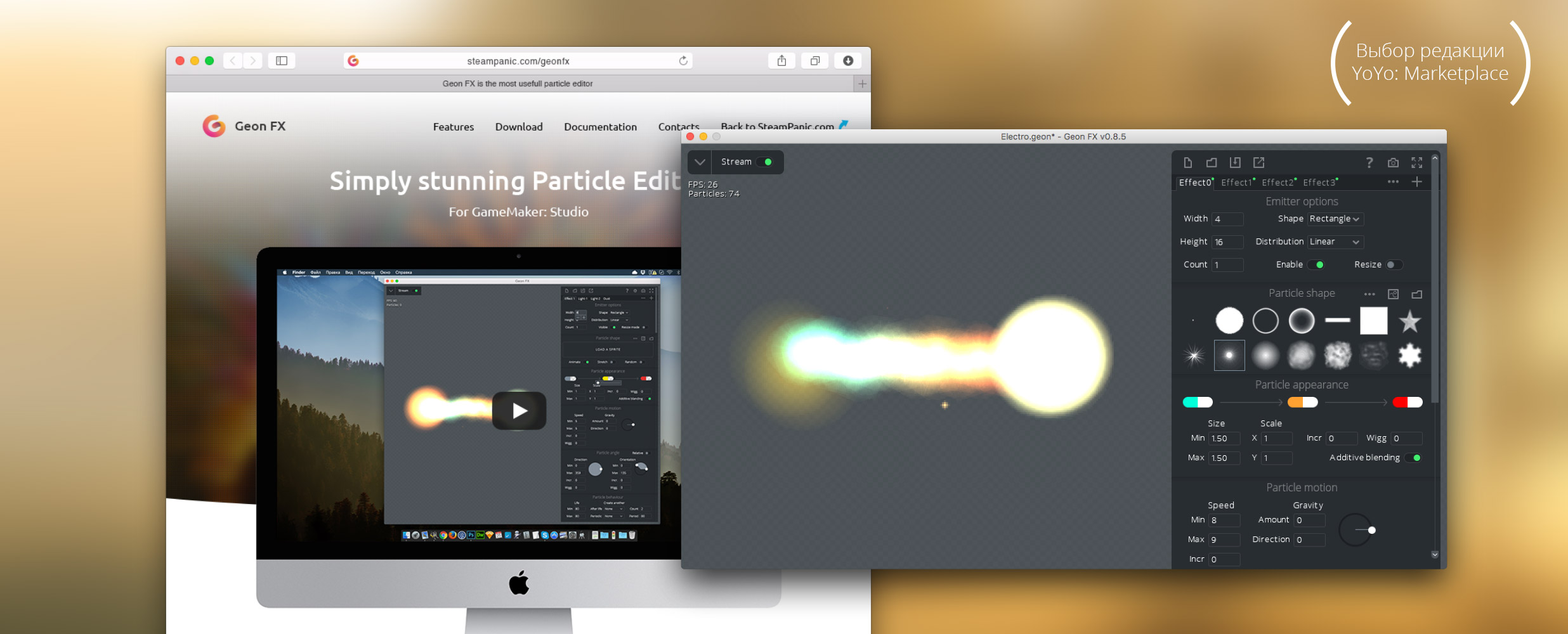
Geon FX
Another non-standard choice is the emphasis on mimicry, references to cats, but at the same time a steampunk setting. Why and how I stopped at it.
Kirill: The cat appeared when we were trying to make the setting more accessible to the masses. But nothing came of it. Then we turned a harmless cat into either a dead or a living Schrodinger cat, who plays with us while we are in a coma.
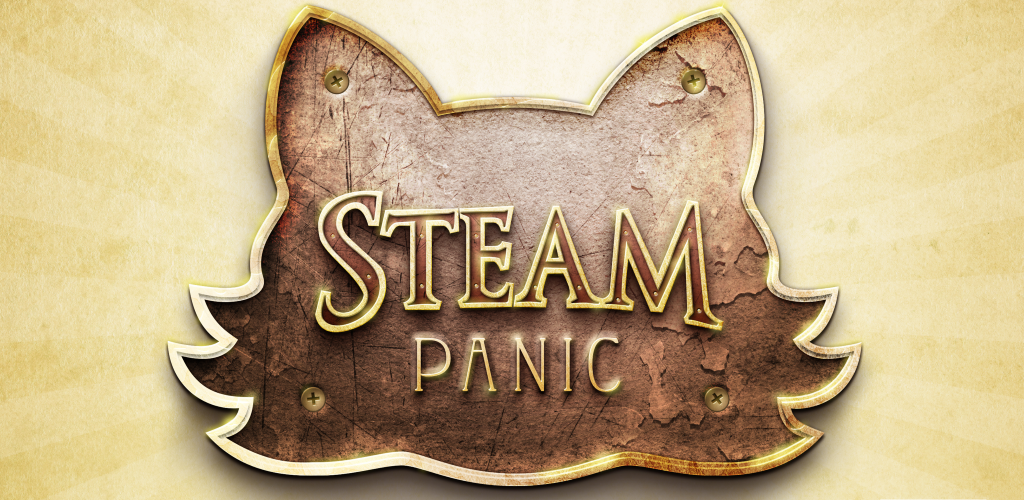
In part, this is a reference to a painful life experience. Partly, the recognition that the game is a niche one, for a hardcore audience of fans of intellectual puzzles, so that people do not confuse Steam Panic with three—in-a-row games, in which everything is much simpler and there is an element of randomness.
Steampunk as a setting is beautiful because it is eternal, it is a classic. The game stands out strongly against the background of other puzzles and does not look outdated, despite the fact that it was started seven years ago.
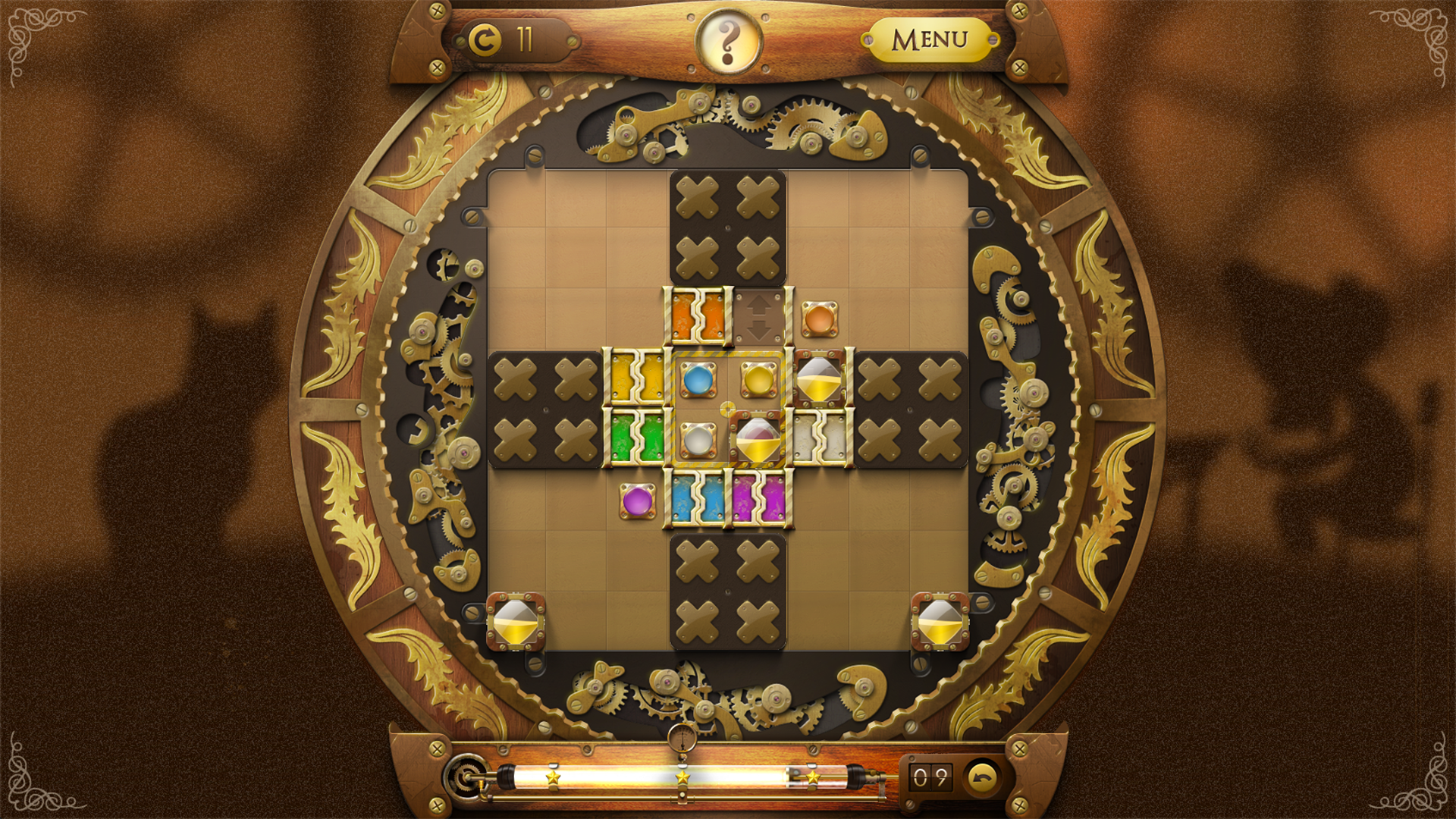
We are all well aware that paid games are “not coming” now, but you decided to sell the game anyway, why?
Kirill: And here’s a funny moment: premium is coming back into fashion. Mikhail Kuzmin from HeroCraft spoke about the good performance of the paid Tempest. Three indie friends have converted their games to paid ones. The audience has grown, ready to pay for high-quality content. Many brag about the lack of in-game purchases. Apple arranges collections and gives such games features. It’s nice to realize that outdated promotion models on mobile phones, such as sending keys to the press and adding them to catalogs, have come to life again. Players and developers are tired of milking, many want an honest one-time payment without registration and SMS.
And now forget everything I wrote about above. A pathetic attempt to hide a simple fact: we haven’t figured out how to do it without harming the atmosphere. And I’m glad that we released the game in premium on iOS, because the levels are really difficult. Most players would just fall off before the activation payment.
There are thoughts on how to fix it. Let’s compare the results when we go out with fritupley on Google Play.

The game has received a feature in a number of major regions, including Canada and the UK. Can you share your first sales results?

Kirill: The feature in the new products on the main page gave us something in Russia (the third region in terms of payments), but most of the sales were brought not even by the App Store collections, but by the German application catalog, from where direct purchases were made. Thanks to him, we got into the Top 3 paid puzzles in Germany. This is despite the fact that we did not have a feature on the main one in Germany. The peak of purchases came on the publication’s release on German portals and the release of a light update on Friday. We have been in the App Store for only a week, we get $70-$200 a day.
It doesn’t suit me yet, but there is a plan to improve everything. I am glad that the feature is not a panacea at all, but Uncle Galenkin’s advice works here too.


